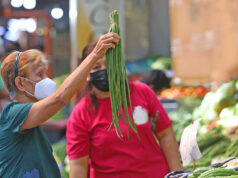SOUTHEAST ASIA is expected to be the top wheat importing region in 2018/2019 driven by demand from Philippines and Indonesia, the US Department of Agriculture (USDA) said.
In its Grain: World Markets and Trade report, USDA said that wheat imports for the Philippines have more than doubled its demand over the last decade, with a large surge in 2018/2019.
“Wheat imports in that year were boosted by reduced supplies of other grains as typhoons cut domestic corn and rice production,” it said.
Along with the Philippines, Indonesia is also expected to drive the demand for wheat during the period. “Indonesia has more than doubled its imports in the last decade, becoming the world’s second-leading importer after Egypt. Both food and feed demand in that country have skyrocketed in recent years,” USDA noted.
This is expected to continue until 2019/2020, with the Philippines and Indonesia driving the demand. “Wheat demand in the region continues to trend higher based on longer-term shifts in consumption from rice to wheat as diets diversify,” it said.
The Philippine Statistics Authority (PSA) said that in April 2019, the Philippine imported wheat valued at $102.04 million, down 12.2% year on year. In the first four months of the year, wheat imports rose 21.6% to $543.6 million.
Meanwhile, in a separate report for oilseeds, USDA said that copra production in 2019/2020 is expected to decline 2.8% due to lower output from the Philippines caused by stress on trees after two years of heavy nut bearing.
“Copra meal production is projected to slightly decrease due to lower copra production in the Philippines while all other countries remain unchanged,” it said.
According to PSA, coconut production in the first quarter of 2019 rose 0.2% to 3.31 million metric tons (MMT). Davao Region was the top producer, accounting for 14.4% of total production, followed by Zamboanga Peninsula (13.6%), and Northern Mindanao (12.9%). — Vincent Mariel P. Galang



